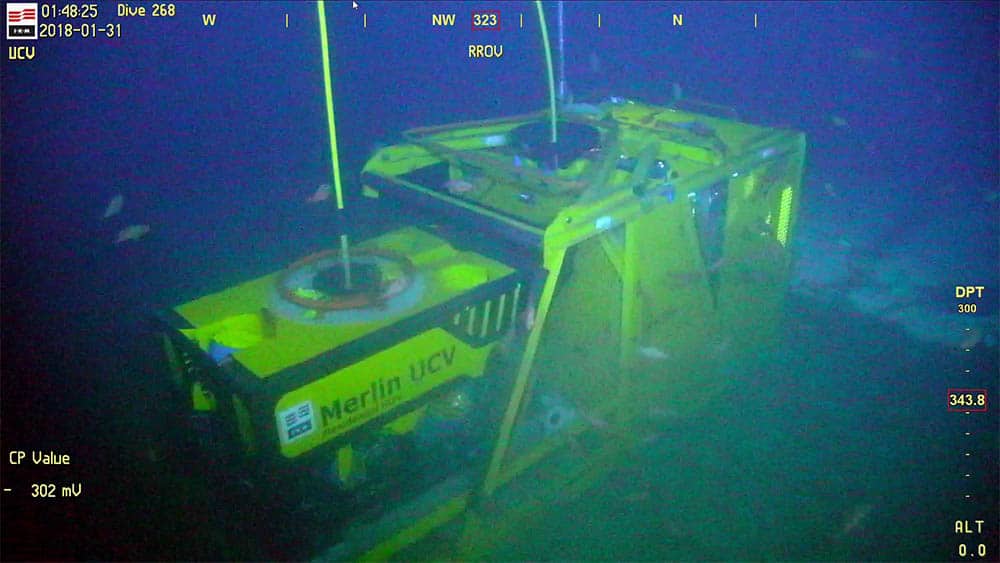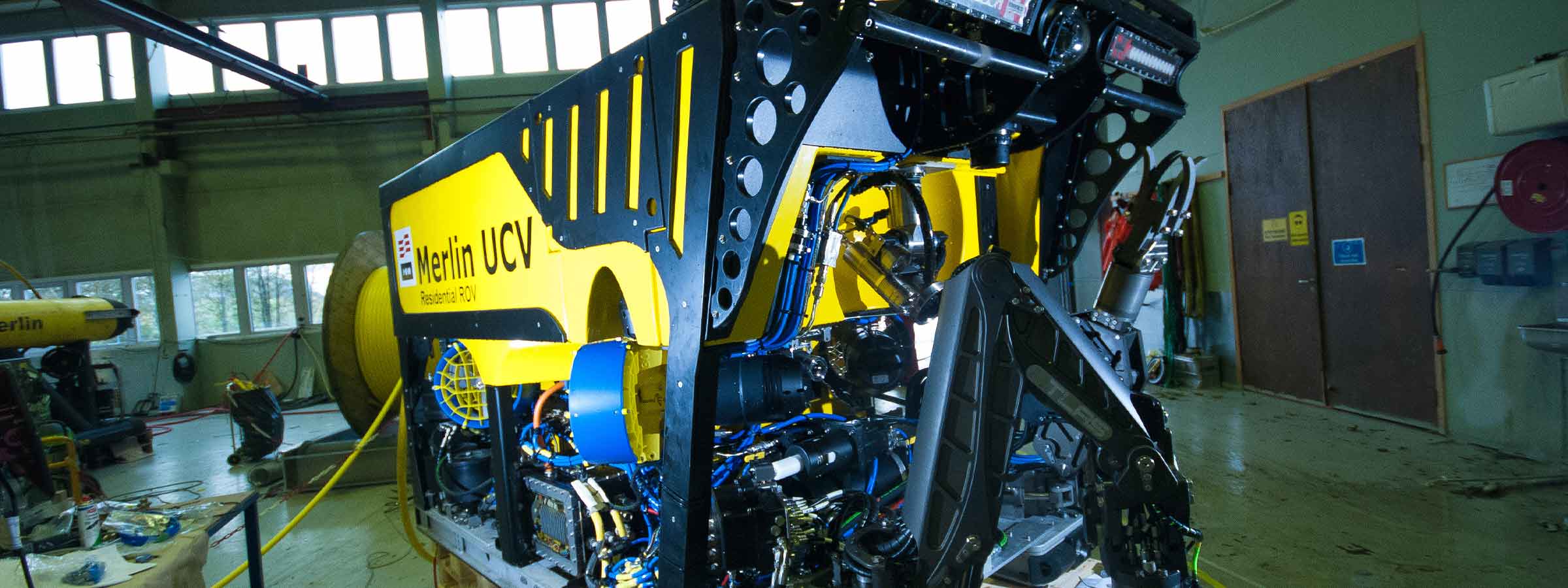Our SPRINT-Nav hybrid navigation instrument is helping to drive a growing move towards the use of resident ROV systems. We visited Norway-based IKM Subsea to find out more.
IKM Subsea has been taking a step-wise approach to resident subsea systems. After building its first all-electric remote operated vehicles (ROVs) in 2015, the company has gone on to introduce a subsea garage system from which their latest vehicles can operate.
Having vehicles based subsea has a number of benefits that more and more operators are seeing. As resident systems, deployed permanently, or semi-permanently subsea, vehicles can be on site, ready for action, 24/7, supported from onshore – reducing cost and increasing safety, operability, and productivity.
Resident ROVs
IKM Subsea’s resident ROV (R-ROV) concept is based on the firm’s 3,000 m-rated Merlin UCV ROV, which operates on a 1,000 m excursion capable tether management system (TMS) from a subsea “E-cage” (or garage). The E-cage is in turn wired to a host platform. Since late 2018, one of these systems has been operating on the seabed at operator Equinor’s Snorre B facility, offshore Norway. It’s available on demand, piloted from offshore and onshore (via a fiber optic link to the beach), on three-month long deployments. Between those deployments, it’s hauled to the surface, using the host facility’s crane, for maintenance.

Enabling a subsea resident vehicle poses a number of challenges, from remote control functionality to reducing maintenance requirements. “A key requirement has also been station keeping, to help with certain tasks, when you need the ROV to be stationary,” says Ments Tore Møller, IKM Subsea’s Engineering Manager, “and as a backup mode of operation, if communication is lost. It’s also useful for path-follow mode, when the ROV can navigate itself.”
Compact hybrid navigation
For these capabilities, IKM Subsea looked to SPRINT-Nav. SPRINT-Nav is our compact hybrid navigation instrument built around highly robust and accurate Honeywell ring laser gyro (RLG) inertial sensors, in an inertial measurement unit (IMU), tightly coupled with our Syrinx Doppler velocity log (DVL), and a high-precision pressure sensor. Tightly integrating raw sensor data from these sensors at a low level means higher levels of accuracy and reliability are achieved: ROVs can calculate their position for longer with less drift.
SPRINT-Nav is also fast to initialise, with no need for calibration manoeuvres before getting to work. This is because it runs two algorithms so that the inertial navigation system (INS) can instantly initialise from the attitude, heading reference system (AHRS) in the IMU. It is also due to the RLG’s very deterministic characteristics, compared with other types of gyros.
All of these characteristics make it a very popular instrument for resident ROVs that can be quickly called on to operate, without waiting on weather or spending time getting to the work site.
Going tetherless
This transformation in the ROV world is just starting. There is more that could be done. Some are looking to remove the tether, because survey work today is limited by the length of the tether from a fixed point. Møller believes there will be a need for different vehicles to do different things.
Without a tether, and aided by SPRINT-Nav, a vehicle travel further, between nodes where it could recharge or transfer data. Compatts on the subsea cage would mean that the ROV’s return to its standby position could be automated, supported by anti-collision systems. Our BlueComm free space optical modem, providing live video transmission through the water, enables live remote controlled operations.
Another option is deploying a cage with battery packs, so that it’s independent of both a support vessel and having nearby infrastructure, with communications and control from onshore via a surface buoy and the 4G cellular network, says Møller.
IKM Subsea is also looking at digital twins of the subsea world. SPRINT-Nav would provide positioning alongside a 3D sonar, which could recreate the subsea environment. If communications or the sonar drops out, SPRINT-Nav can continue calculating where the ROV is. A digital twin would also make simulating procedures and training easier and more realistic and reduce time on the real system, says Møller. Next steps include more automation.
With interest in seabed deployed systems increasing, more of these systems are appearing in the market. Their capabilities and concepts of operation will evolve and differ, but they can all rely on our navigation and communications technologies.
